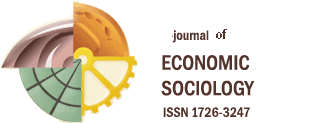Alex Vakarash
Context in Leisure: The Neglected Side
Book review: Stebbins R. A. (2017) Leisure Activities in Context: A Micro-Macro/Agency-Structure Interpretation of Leisure, New York: Routledge. 198 p.
Studies of leisure stand apart at the intersection of sociology, economics, anthropology, and psychology, as they tend to focus on subjective experience. Ten years ago, Robert Stebbins, a research veteran in this discipline, emphasized all sorts of contexts and external factors that cannot be omitted and should be taken into account when doing such research. Over 30 years of studying this phenomenon, Stebbins managed to build his own theory, the “Serious Leisure Perspective,” and addressed boredom and choice as components of leisure. In Leisure Activities in Context, he further develops the fundamental idea he introduced 10 years ago (the Serious Leisure Perspective) based on Anthony Giddens’ theory of structure—which is reflected in the subtitle of Stebbins’ book: “A Micro-Macro/AgencyStructure Interpretation of Leisure.” Stebbins categorizes context at the micro-, meso-, and macro-levels, emphasizing that leisure research always focuses on only one layer, and no one has previously attempted to paint the big picture. In this vein, he formulates the goal of his new book—to show how different levels communicate with each other in the field of leisure. Stebbins uses his own theory as a classification of leisure activities divided into three types: serious, relaxed, and project-based. He expresses the hope that, after reading his new book, readers will stop looking at leisure activities solely from the perspective of micro-structure.
Retsenziya na knigu: Stebbins R. A. 2017. Leisure Activities in Context: A Micro-Macro/Agency-Structure Interpretation of Leisure. New York: Routledge. 198 p. [Context in Leisure: The Neglected Side
Book review: Stebbins R. A. (2017) Leisure Activities in Context: A Micro-Macro/Agency-Structure Interpretation of Leisure, New York: Routledge. 198 p.]. Economic Sociology, vol. 21, no 3, pp. 114-121 (in Russian)




.gif)






 ©
© 